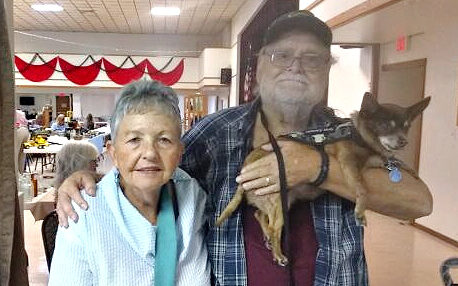
Drawing by Jerry Barker, Mobile, Alabama, 2024
April 1865, at the very end of the American Civil War, was one of the most contentious and consequential months in all of American history. On April 2nd the Confederate Capital, Richmond, Virginia, was effectively evacuated and buildings along the waterfront were burned as shown in this hand-colored lithograph. The lithograph was published by Currier & Ives and is entitled “The Fall of Richmond, Virginia, on the Night of April 2nd, 1865”.
The capitol and most of the businesses and homes were spared when the Union Army helped to extinguish the flames.
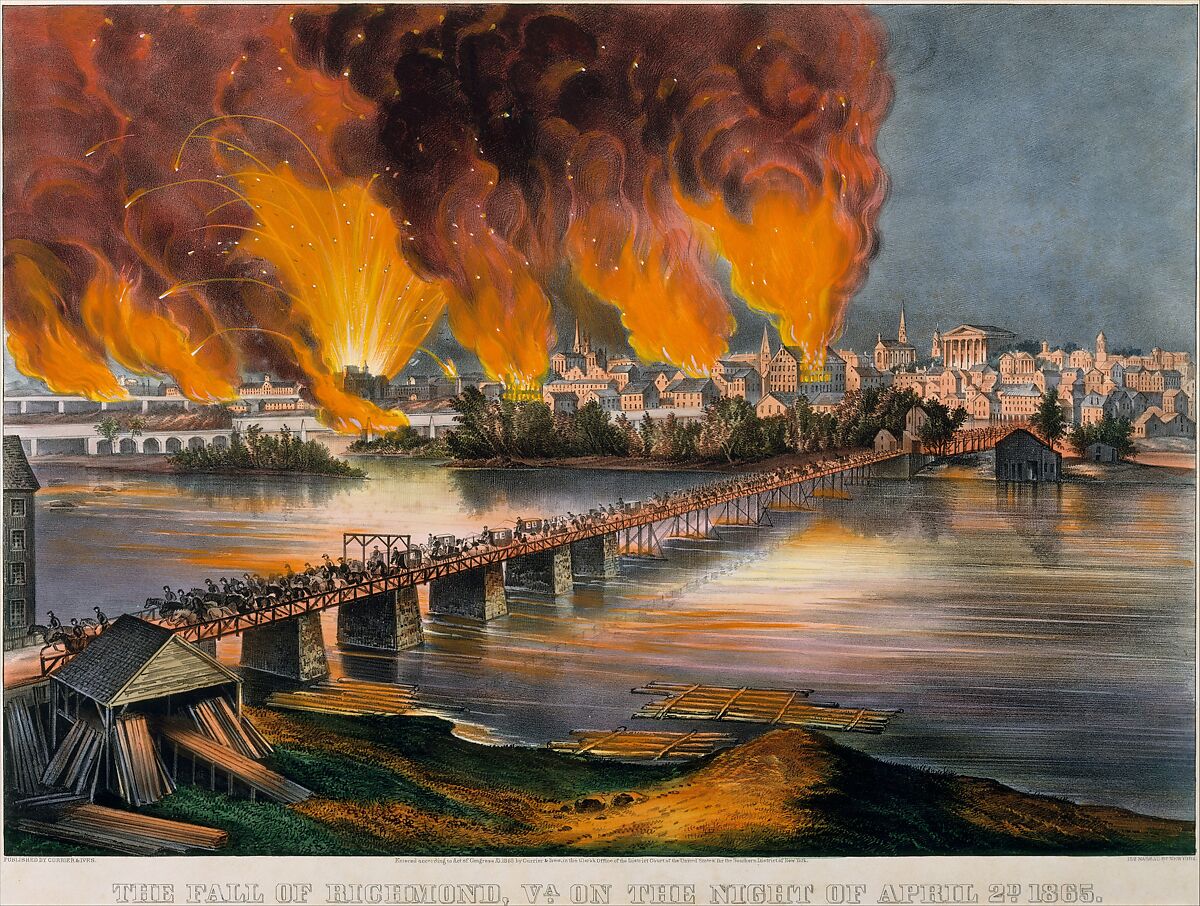 Photo Courtesy of the Metropolitan Museum of Art, NY[1]
Photo Courtesy of the Metropolitan Museum of Art, NY[1]
On April 7th General Ulysses S. Grant called on General Robert E. Lee to surrender and on April 9th Lee did surrender his 28,000 troops of the Army of Northern Virginia[2].
General Lee’s surrender at Appomattox Courthouse, a small town in central Virginia, practically ended the Civil War. However, the War was not formally ended until President Andrew Johnson declared an end to the War in August 1866.
We have read that Confederate President Jefferson Davis was unaware of Lee’s surrender, but we know that, while not involved in the terms and negotiations of surrender, he would have been aware of the events at Appomattox Courthouse. Those events guided his actions over the next month or so. He never surrendered.
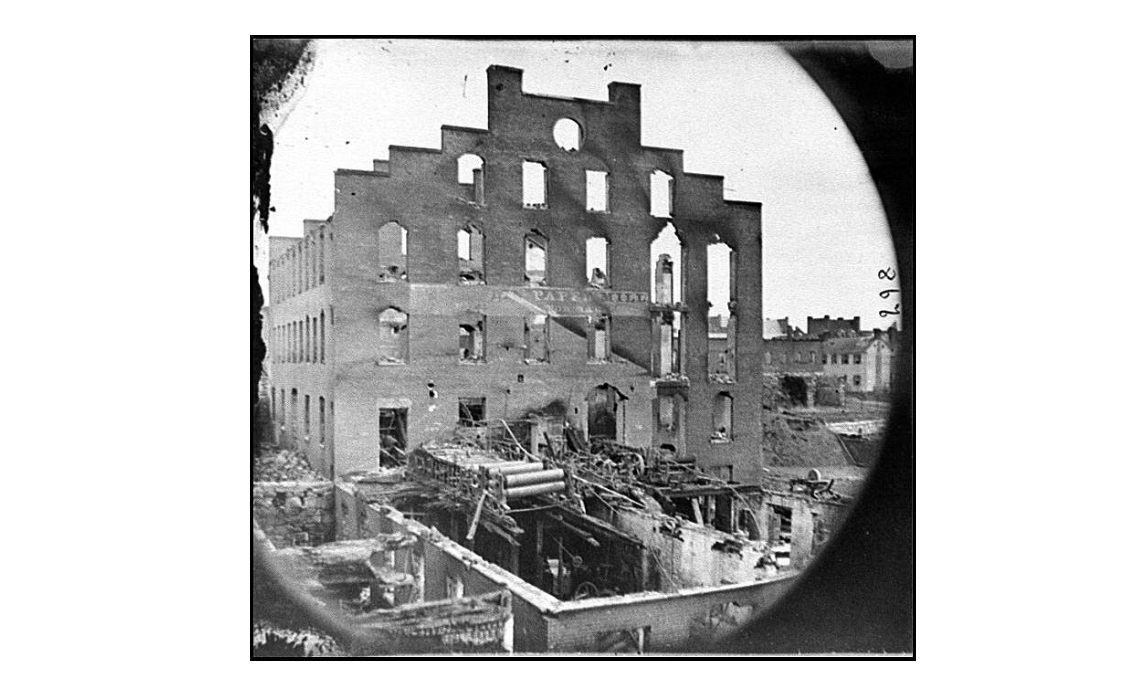 Richmond, Virginia. Ruins of a paper mill; wrecked paper-making machinery in foreground.
Richmond, Virginia. Ruins of a paper mill; wrecked paper-making machinery in foreground.
Alexander Gardner (1821 – 1882), Photographer. Library of Congress Prints and Photographs Division Washington DC https://hdl.loc/loc.pnp/pp.print
Decamp
On April 14th President Lincoln was assassinated. His killer was John Wilkes Booth who was obsessed with the surrender and defeat of the Confederacy[3]. And, again, while President Davis was nowhere near Washington nor Richmond at the time of the assassination, he was drawn intricately into the complicated plot to kill President Lincoln. President Johnson placed a $100,000 bounty on Davis’ head for treason and, we have read, for a suspected role in the conspiracy to kill President Lincoln[4].
While the First Lady Varina Davis (1826–1906) and the Davis family had left Richmond in late March, Davis and his Cabinet left on the 2nd of April.[5]
According to C.W. Roden[6]: On Sunday April 2nd, “…while seated in St. Paul’s Episcopal Church in Richmond attending worship services, President Davis received a telegram from General Robert E. Lee, announcing the fall of Petersburg, the partial destruction of his army, and the immediate necessity for flight. Davis and his cabinet were forced to abandon Richmond and flee south away from General U.S. Grant’s advancing Union army.
Davis escaped to Danville, Virginia, together with the Confederate Cabinet, leaving on the Richmond and Danville Railroad. Richmond would fall the next day on Monday, April 3rd. Davis would be on the run for six weeks, an epic journey through four states by railroad, ferry boat, horse, cart, and wagon.”
Davis and his Cabinet had a meeting in Charlotte, North Carolina, on the 26th of April and then they all left and crossed into York County South Carolina. Near the Catawba River they were met by Confederate Colonel Andrew Baxter Springs, owner of Springfield Plantation in Fort Mill.
A Relaxing Interlude at Springfield Plantation
Larry has a degree in History with a firm grounding in the American Civil War. We both knew about the fall of Richmond and the flight of the Confederate Cabinet. However, neither of us had heard, read, nor studied anything about this short story which we found online. The story, entitled “Jefferson Davis & His Cabinet Playing Marbles,” and was written by C.W. Roden on April 3, 2023[7].
Springfield Plantation, which is listed on the National Register of Historic Places,[8] is known to have existed in 1790, and John Springs III (1782-1853) brought his wife (and cousin) there in 1806. While it is still a working plantation, Leroy Springs & Co. moved into the home in 1987 and it is now his corporate office . It is still in the Springs family.
On the 26th of April Davis received bouquets of spring flowers from the local ladies and the party, except for Secretary of the Treasury, moved onto Springfield Plantation. Remember that Davis had a price on his head and all of his fugitive Cabinet members were being actively pursued by the United States Army.
Davis was also responsible for the men in his cavalry escort. Five members of the Cabinet were with Davis as well as part of the Confederate archives and treasury. Look at those images of occupied Richmond again: their world was gone. They could never go back. We cannot imagine how worried each man was. No one, including the cavalrymen, had any idea when or exactly how this pursuit would end.
Davis had thought about, and was still actively considering, the re-formation of the Confederacy either in Mexico or in the Trans-Mississippi. The Trans-Mississippi was the area of major military operations west of the Mississippi River. It included areas such as Missouri, Kansas, and the Indian Territory (now modern-day Oklahoma).[9]
A Game Of Marbles
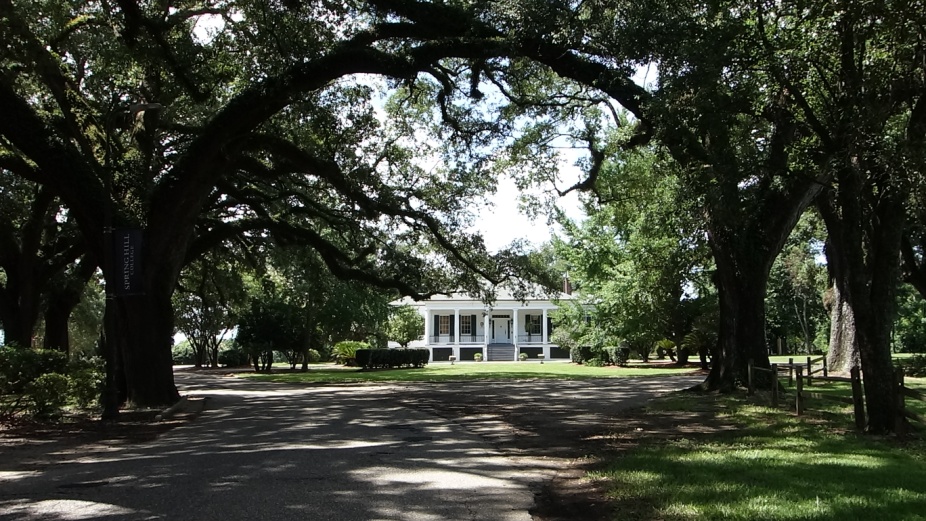
We have no idea who mentioned it, but the visitors and two of the sons decided to play marbles. We have a suspicion that Eli Springs, and his brother Johnny probably brought it up. Colonel Andrew Baxter and Julia Blandina “Blandie,” who were cousins, had about a half dozen sons and a number of girls during their marriage. As was all too common at the time, some died in infancy or childhood. At any rate Eli, thirteen, and Johnny twelve wanted to play.[10] The game took place inside on the parlor floor.
Roden credits his account of the game to the Springs Family Archives[11] but it is also reported in a number of other places. The “National Register of Historic Places Inventory—Nomination Form,” United States Department of the Interior, August 14, 1985, which we mentioned above even reports the story!
The application reads in part: “It is believed that the group stayed at Springfield Plantation for two or three days, during which they rested, conferred, and found time for recreation such as a game of marbles … with two of the Springs’ sons.” We have been unable to track down the source of the Register’s information but here is the footnote should you want to give it a try![12]
Roden tells us that the players were the President; Post Master General John H. Reagan, Secretary of StateJudah P. Benjamin, and Secretary of War John C. Breckinridge. Johnny played with Breckinridge and Benjamin while Eli was paired with the President and Postmaster.
“The teams got down on the knees, laughing and relaxing. Secretary of the Navy Stephen Mallory wrote of the evening, ‘It was an hour of refreshing, well-contested game of marbles. Breckinridge, the best player since (John) Marshall, with his usually good luck, came off victorious. He is the best grown-up player in the Confederacy, if not the world.
It was said that, for their part, the two Springs boys were amazed that these four powerful men knew all the rules about marbles.”
Secretary of the Navy Stephen Mallory
This photograph features the “Avenue of the Oaks” which leads to Stewartfield. The home was built in 1849 and it is now on the campus of Spring Hill College in Mobile, Alabama. Secretary Mallory attended Spring Hill which is a private Catholic College. Bishop Portier bought the land for the Jesuit College in 1830.[13] Many structures on campus, including Stewartfield, are listed on the National Register of Historic places.
After the sojourn at Springfield, Secretary Mallory continued south to La Grange, Georgia, where his family lived. He was taken prisoner there on May 20th “..and was kept a prisoner for ten months in Fort Lafayette, on a small island in New York harbour. Released on parole in 1866, he returned to Pensacola, Florida, where he practiced law until his death”[14] in 1873.
The End Of The Trail
Rested, and with the marbles back in the bag, the party moved on. Colonel Andrew Baxter recommended that the President and the Cabinet split up to help prevent capture.
When Davis and a small entourage reached the farming community of Irwinville, in Irwin County, Georgia, on the evening of May 9, they thought that they were well ahead of the Union Army.[15] They set up camp near a creek bed. “Early the next morning the camp was awakened by a pop of gunfire and within minutes was surrounded by members of the First Wisconsin and Fourth Michigan cavalries. Not one shot was fired by the Confederates.”
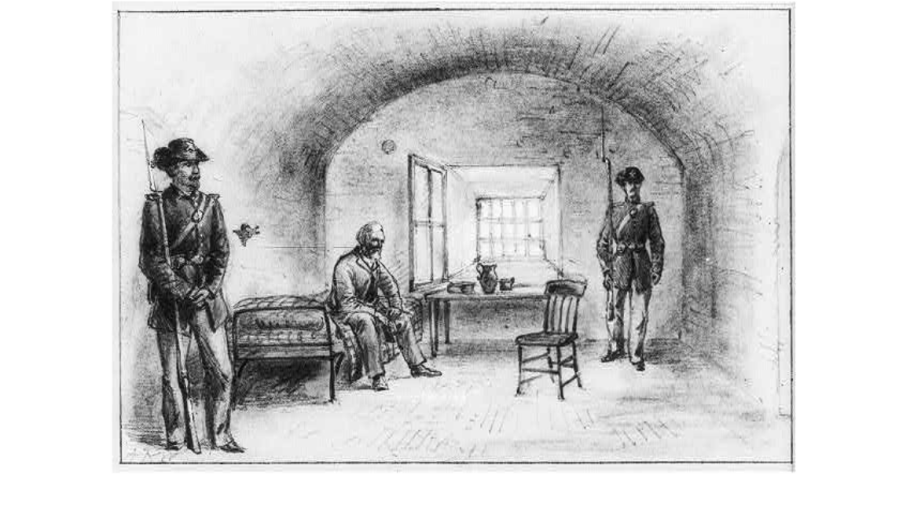 President Davis “…was imprisoned in a damp casemate at Fort Monroe, Virginia, and was put in leg-irons.” Varina worked tirelessly to gain better treatment and quarters for him, and in 1866 she moved permanently to Fort Monroe. Many in the North were “outraged” by Davis’ harsh treatment.
President Davis “…was imprisoned in a damp casemate at Fort Monroe, Virginia, and was put in leg-irons.” Varina worked tirelessly to gain better treatment and quarters for him, and in 1866 she moved permanently to Fort Monroe. Many in the North were “outraged” by Davis’ harsh treatment.
There was a great deal of political uncertainty at the time about what type of Reconstruction would eventually be developed and imposed on the South. One view included punishment for the former Confederate soldiers and their families, southern businesses, and any industry still open which supported or nourished the Confederate Government. “Another group worked for reunification in its broadest sense rather than punishment.[16]
“Northern public opinion brought about his removal to healthier quarters, Davis remained a prisoner under guard for two more years.” After his removal to better quarters he and Varina could spend time together. “Finally… Northern lawyers offered their free services to defend him in a treason trial, which Davis longed for.” Originally, there was consideration by the Government that he had been involved in the plot to kill President Lincoln.
And as for treason “the government… never forced the issue—because, many believed, it feared that such a trial might establish that the original Constitution gave the states a right to secede. The case was finally dropped on December 25, 1868.”[17]
Released from prison, Davis tried a number of business ventures and some in Mississippi attempted to help him recover as a successful cotton planter. Eventually, he retired to Beauvoir which you can visit today in Biloxi, Mississippi.[18] Beauvoir is the Jefferson Davis home and Presidential Library. There are often Living Historians and re-enactors as well as rifle and cannon fire.
While at Beauvoir the former President started writing his two-volume memoir The Rise and Fall of the Confederate Government (1881). The President never sought to have his citizenship restored. He died in December 1889.
Postmaster General John H. Reagan
John Henninger Reagan was an effective Postmaster for the Confederacy. He was born in 1818 in present-day Gatlinburg, Tennessee, in the Smoky Mountains. Reagan was taken prisoner along with President Davis.
On May 25, 1865, Reagan and former Vice President Alexander H. Stephens were sent to Fort Warren in Boston. He spent the next twenty-two weeks in solitary confinement. We wonder if he ever thought back to Springfield Plantation and that marble game while all alone. He was released in December 1865 and went to Fort Houston, his family home at Palestine, Texas. He farmed his neglected fields.
“Reagan once again became a leading member of his community and helped the state reorganize its government. He served as a member of the State’s Constitutional Convention in 1875 and helped author the new Texas Constitution. That same year, he was returned to his old seat in the U.S. House of Representatives and remained there 13 years—leaving it when he won election to the United States Senate in 1887. It was a bitter-sweet victory for the Senator. In December of that year, his long-time friend and former CSA President Jefferson Davis died on a business journey while in New Orleans.”[19]
Reagan had a long and productive public life both at the National and state levels. “Reagan spent time with his family and wandered his old childhood haunts in Sevier County. In 1903, at the age of 85, John H. Reagan finally retired from public life. He returned to his home near Palestine, Texas and died on March 6, 1905. In honor for his service to a Republic of Texas, the Confederate States of America, the United States, and the State of Texas, a day of mourning was declared and the entire Texas State Legislature left Austin to attend his funeral.”[20]
Secretary of State Judah P. Benjamin
Benjamin was born in the West Indies in 1811 to “Sephardic Jewish parents from London, who had moved to St. Croix in the Danish West Indies when it was occupied by Britain during the Napoleonic Wars.” During the American Civil War he served Davis as Attorney General, Secretary of War, and, starting in March 1862, as Secretary of State.[21]
After his family immigrated to Charleston, South Carolina, he attended Yale College, when he was only fourteen, but he left without graduating. He moved to New Orleans, studied law, and passed the bar in about two years.
When Davis and his small party reached Abbeville, South Carolina, on May 2, 1865, Benjamin told Davis that he wanted to leave the party temporarily to go to the Bahamas and send instructions to “foreign agents”. He told Davis that he would soon join him in the Trans-Mississippi. We are confident that Benjamin planned never to return to the United States. And he didn’t.
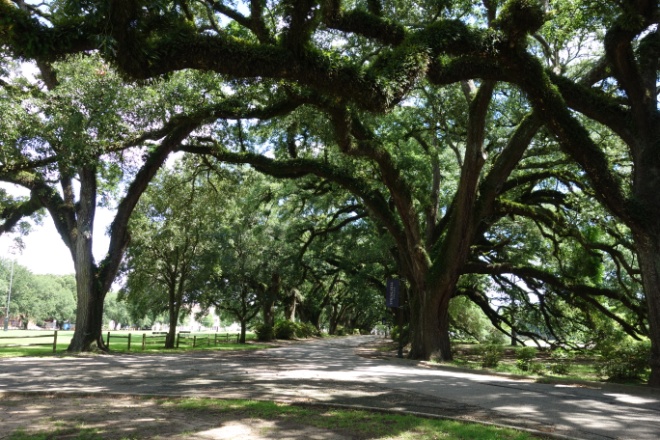 “With one companion, Benjamin travelled south…, pretending to be a Frenchman who spoke no English. He had some gold with him, and left much of it for the support of relatives. He was traveling in the same general direction as the Davis party, but evaded capture…. Benjamin reached Monticello, Florida, on May 13 to learn Union troops were in nearby Madison. Benjamin decided to continue alone on horseback, east and south along Florida’s Gulf Coast, pretending to be a South Carolina farmer.” [22]
“With one companion, Benjamin travelled south…, pretending to be a Frenchman who spoke no English. He had some gold with him, and left much of it for the support of relatives. He was traveling in the same general direction as the Davis party, but evaded capture…. Benjamin reached Monticello, Florida, on May 13 to learn Union troops were in nearby Madison. Benjamin decided to continue alone on horseback, east and south along Florida’s Gulf Coast, pretending to be a South Carolina farmer.” [22]
After hiding in a swamp he was helped by locals and he made his way to the Gamble Mansion in Ellenton, Florida. Today you can visit the Judah P. Benjamin Confederate Memorial at Gamble Plantation Historic State Park in Ellenton. We have visited the site and enjoyed the visit very much. We were in the Ellenton area to antique shop. There are about a dozen shops in Ellenton driving south from Gamble to the Gulf of Mexico. We bought some of our finer marbles and marble collectibles there.
Benjamin caught a blockade runner which took him Bimini, Bahamas. He pretended to be a cook when Federal troops inspected the ship. After one ship exploded and a second caught fire, Benjamin finally reached Cuba and then Britain on August 6 1865.
Benjamin “was called to the bar (June 1866) after only five months’ residence and where he achieved his greatest professional success. In 1872 he became a queen’s counsel. His Treatise on the Law of Sale of Personal Property (1868) was the principal textbook on its subject for many years in England and the United States.”[23]
In England Benjamin was estranged from his wife and he spent much of his time alone. In fact, he died alone on May 7, 1884. His daughter arranged for him to be buried in Paris in Pere Lachaise Cemetery. Until 1938 the only inscription on his tombstone was “Phillippe Benjamin”.[24] Incidentally, Jim Morrison’s grave has a perpetual lease in Pere Lachaise.
Secretary of War John C. Breckinridge
Breckinridge was not only the youngest Vice President ever elected to the office (serving under President James Buchanan 1856 – 1859), he was also a compassionate and effective soldier who had commanded Confederate forces in southwestern Virginia.
He had only served as Secretary of War since February 1865. Remember that Calvary guard which protected the Davis’ party? Well, Breckinridge commanded the soldiers and he was in charge of the $150,000 in gold specie which was all that remained in the Confederate treasury.
In May 1865 Breckinridge along with a former captain in the Confederate Navy, “…escaped Federal troops by sea …in a daring boat heist.” The two travelled in a boat they named the No Name.
While Benjamin had a breath-taking escape, he wasn’t the only one. “Breckinridge fled to Cuba in a film-worthy adventure surviving an encounter with pirates, two significant storms, and near starvation due to lack of provisions. Now in exile, Breckinridge soon continued to Britain, then Canada where he reunited with his family. Perhaps he retained some of that Confederate gold as he spent 1866 through early-1868 touring Europe.”[25]
In a Christmas amnesty in 1868 President Andrew Johnson proclaimed amnesty for all former Confederates. Breckenridge returned to his home state of Kentucky by March 1869 where he worked successfully in law and the insurance and railroad industries. He died in Lexington in 1873 (some sources claim that he died in 1875).
No Real End
This little story really has no end. It illustrates again that marbles and the games of marbles have been part of the American fabric since well before the Nation was founded. Marbles have played a part in American peace and war; in hard times and in good.
We think that while this story is sad it is also uplifting. We certainly hope that you have enjoyed reading it.
You can read more about marbles and the American Civil War in this magazine at How are Marbles & Civil War Prison Art Connected?
and Marbles Used as Munitions in the American Civil War
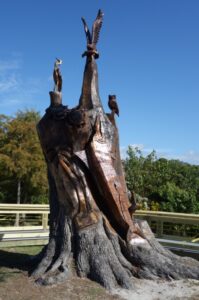
References
- Open Access @ The Met Accession Number 63.550.11 ↑
- You can read more about the surrender @ https://www.gilderlehrman.org/history-resources/spotlight-primary-source/surrender-robert-e-lee-1865 7/3/2024 & https://emergingcivilwar.com/2021/04/03/the-fall-of-richmond-april-3-1865/ “The Fall of Richmond” 7/2/2024 ↑
- You might want to refresh your memory @ https://www.loc.gov/collections/abraham-lincoln-papers/articles-and-essays/assassination-of-president-abraham-lincoln/ 7/3/2024 ↑
- https://www.amphilsoc.org/blog/musings-manuscripts-metamorphic-figure-jefferson-davis (7/4/2024). Incredibly, the value of the $100,000 bounty would have the buying power of about $1,927,000 today! And consider that this is in an America shattered by War and in extremely uncertain economic straits. The budget deficit as a percentage of Gross Domestic Product had skyrocketed during the War and an additional $2 million expenditure wouldn’t help the situation. ↑
- https://encyclopediavirginia.org/entries/davis-varina-1826-1906/ 7/4/2024 ↑
- https://southernfriedcommonsense.blogspot.com/2020/04/the-flight-of-president-jefferson-davis.html (7/3/2024). Roden’s account “The Flight Of President Jefferson Davis Through York & Union Counties (April 26-30, 1865)” is the most comprehensive, well-written, and illustrated account on the subject that we have seen. ↑
- https://civilwartalk.com/threads/jefferson-davis-his-cabinet-playing-marbles.201724/ (7/3/2024). The story was first published by Roden on his Blog site Southern Fried Common Sense & Stuff @ https://southernfriedcommonsense.blogspot.com/2020/04/the-flight-of-president-jefferson-davis.html (7/3/2024). You might also want to see the woodblock or lithograph @ “Jefferson Davis and His Cabinet” https://encyclopediavirginia.org/993hpr-a505fe1293ad770/https://civilwartalk.com/threads/jefferson-davis-his-cabinet-playing-marbles.201724/ ↑
- “National Register of Historic Places Inventory—Nomination Form.” United States Department of the Interior. August 14, 1985. ↑
- Ultimately, the Trans-Mississippi Department was the last Confederate military department to surrender to United States forces in 1865. ↑
- Read more detail about the family @ https://www.andalusiastarnews.com/2017/08/26/springs-family-descendants-have-impressive-heritage/ 7/4/2024 ↑
- @ http://www.springsclosefamilyarchives.com/family-album.html 7/7/2024 ↑
- James E. Walmsley, “The Last Meeting of the Confederate Cabinet.” Bulletin of the Winthrop Normal and Industrial College of South Carolina, vol. 12, no. 4, part 2, June 1919. Rock Hill, S.C.: Winthrop Normal and Industrial College, p. 9. We know that this Bulletin still exists, but we are uncertain that you can see a digital copy. One way to see it, of course, would be to visit Rock Hill! ↑
- See “Spring Hill College” @ https://www.shc.edu/ (7/22/2024). ↑
- The same source tells us that Mallory was born on the Island of Trinidad, West Indies, in 1813. Some sources claim that he was born in 1812. After attending Spring Hill he studied law and was admitted to the Florida Bar. After service in the Seminole War (1835-42) he moved to Key West. “President Jefferson Davis appointed him Secretary of the Navy of the Southern Confederacy (7 Feb., 1861). He lived an interesting life and you can read more about him @ Meehan, T. (1910). Stephen Russell Mallory. In The Catholic Encyclopedia. New York: Robert Appleton Company. http://www.newadvent.org/cathen/09572a.htm 7/22/2024 ↑
- Brown, Brian. “Capture of Jefferson Davis.” New Georgia Encyclopedia, last modified Jun 6, 2017. https://www.georgiaencyclopedia.org/articles/history-archaeology/capture-of-jefferson-davis/ 7/9/2024 ↑
- Drawing originally on tan paper by artist Alfred Rudolph Waud, 1828 – 1891. “The casemate, Fortress Monroe, Jeff Davis in prison.” 1865. Library of Congress Control Number 2004660790; Permalink https://lccn.loc.gov/2004660790 ↑
- Jefferson Davis | Biography, Quotes, Civil War, Death, & Facts | Britannica (7/2/2024), & http://juel.iath.virginia.edu/node/1680 7/9/2024 ↑
- https://www.visitbeauvoir.org/ 7/9/2024 ↑
- “John H. Reagan (1818-1905)” @ http://www.thelatinlibrary.com/chron/civilwarnotes/reagan.html 7/9/2024 ↑
- “John H. Reagan…” ↑
- https://en.wikipedia.org/wiki/Judah_P._Benjamin 7/9/2024 ↑
- Wikipedia ↑
- https://www.britannica.com/biography/Judah-P-Benjamin 7/9/2023 ↑
- https://www.jewishvirtuallibrary.org/judah-benjamin#google_vignette 7/10/2024
- You can read the full story @ https://breckhistory.org/what-happened-to-john-c-breckinridge/ 7/10/2024 ↑

